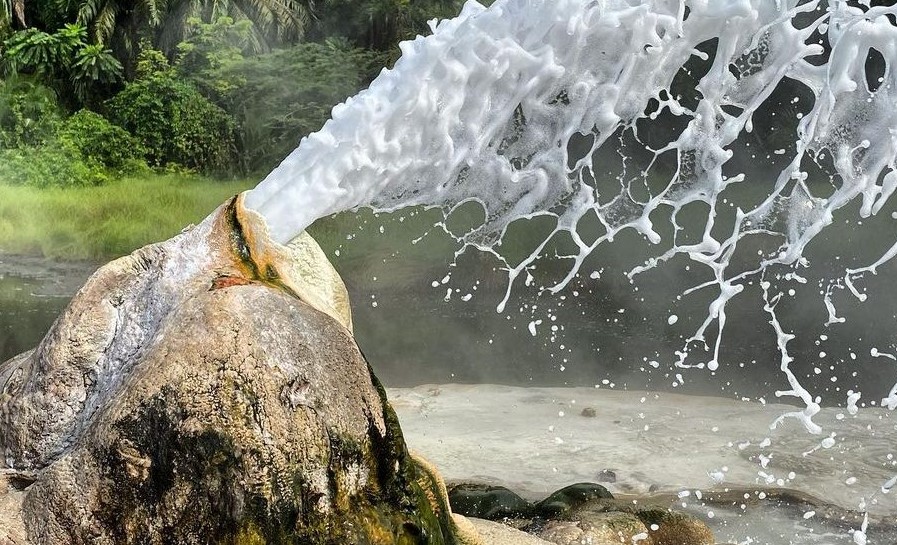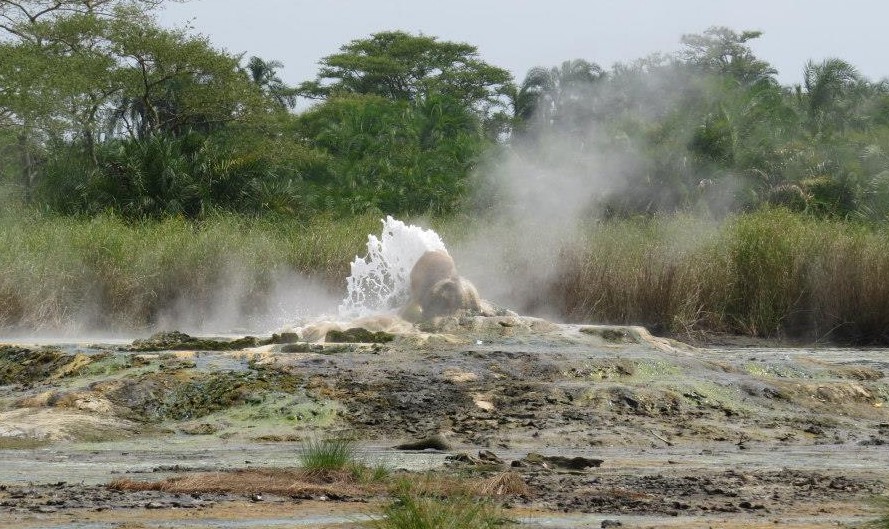Exploring the Mystical Beauty of Uganda’s Hot Springs – Uganda is a country blessed with a diverse range of natural wonders. Among these, the hot springs scattered across the country are a true testament to the geological marvels that exist in this East African nation.
These hot springs, scattered across various regions, hold not only geological significance but also cultural and ecological importance. In this article, we will delve into the mesmerizing world of Uganda’s hot springs, exploring their origins, unique characteristics, and the rich cultural context that surrounds them.
The Geological Marvel Of Uganda’s Hot Springs
Uganda’s hot springs are primarily geothermal features that result from the Earth’s internal heat escaping to the surface through cracks and fissures in the Earth’s crust. The country’s geothermal activity is primarily concentrated along the Western Rift Valley, a geological wonder in its own right.
The Western Rift Valley is part of the East African Rift System, which is an active continental rift zone, believed to be the beginning of a new ocean.
The hot springs are the result of the movement of tectonic plates beneath the Earth’s surface, causing tension and pressure to build up.
When this pressure is released through fractures in the Earth’s crust, it manifests as hot springs. Uganda’s location along this rift valley makes it a hotspot for geothermal activity, giving rise to the numerous hot springs that dot the landscape.
Unique Characteristics Of Uganda’s Hot Springs
Uganda’s hot springs vary in size, temperature, and appearance. Some are small and bubbling, while others are massive pools of steaming water. The temperatures of these springs can range from mildly warm to scalding hot, with the highest recorded temperature reaching up to 100°C (212°F).
The color of the water varies too, from clear and transparent to vibrant shades of turquoise and blue, owing to the mineral content present in the springs.
One of the most famous hot springs in Uganda is the Semuliki Hot Springs, located in the Semuliki National Park. The springs are known for their two distinct sections: one with boiling water and another with cool water. This unique phenomenon allows visitors to boil food, such as eggs and plantains, in the hot section while enjoying a refreshing dip in the cooler section.
Intriguingly, the minerals found in these hot springs have led to claims of their therapeutic properties. Some locals believe that bathing in or drinking the water from these springs can cure various ailments and skin conditions. While scientific evidence is limited, the belief in the healing properties of these springs is deeply ingrained in the local culture.
Cultural Significance
Uganda’s hot springs are not just geological marvels; they also hold immense cultural significance for the communities living in their vicinity. These springs are often considered sacred by the local people, and many myths and legends are associated with them.
For example, the Banyankole people, who live near the Kitagata Hot Springs, believe that these springs are the dwelling place of a powerful spirit called Ndahura. According to their oral traditions, Ndahura is the guardian of the springs and a provider of fertility and prosperity.
As a result, the Kitagata Hot Springs have become a place of pilgrimage for couples seeking blessings for their marriages and fertility.
Similarly, the Bakonzo people in the Rwenzori Mountains have sacred hot springs known as “Male Hot Springs.” They believe that the springs are inhabited by ancestral spirits that protect the community. The springs are visited during important cultural ceremonies, and offerings are made to appease the spirits.
Tourism and Conservation
In recent years, Uganda’s hot springs have gained popularity as tourist destinations. Travelers from around the world are drawn to these unique geological wonders, both for their beauty and cultural significance.
The influx of tourists has led to the development of infrastructure in some areas, including accommodations, walking trails, and visitor centers. While tourism has brought economic benefits to the communities living near the hot springs, it also poses challenges to the conservation of these delicate ecosystems. Increased foot traffic and waste disposal can harm the springs and their surroundings.
To address these concerns, there are efforts to promote sustainable tourism practices and raise awareness about the importance of preserving these natural wonders.
Conclusion
Uganda’s hot springs are a testament to the geological wonders that can be found in this diverse and beautiful country. These natural marvels, with their unique characteristics and cultural significance, provide a captivating blend of science and folklore.
As more people discover the enchanting world of Uganda’s hot springs, it is essential to balance tourism with conservation to ensure that these precious natural resources continue to thrive for generations to come. Whether you’re a geology enthusiast, a cultural explorer, or simply a traveler seeking new experiences, Uganda’s hot springs offer a mesmerizing journey into the heart of this “Pearl of Africa.”



Comment (0)